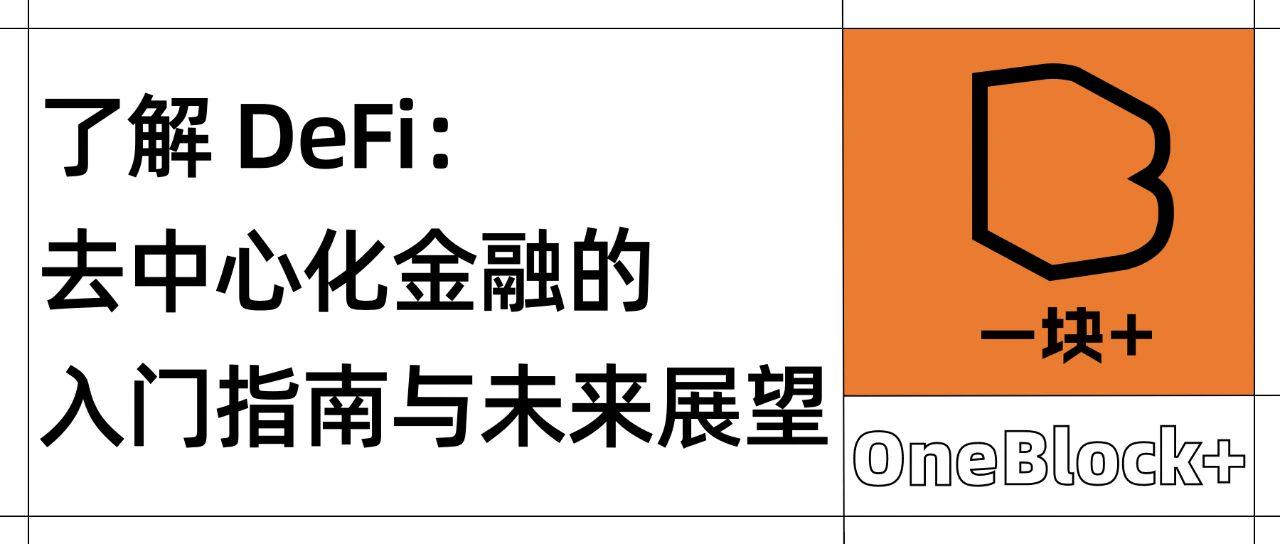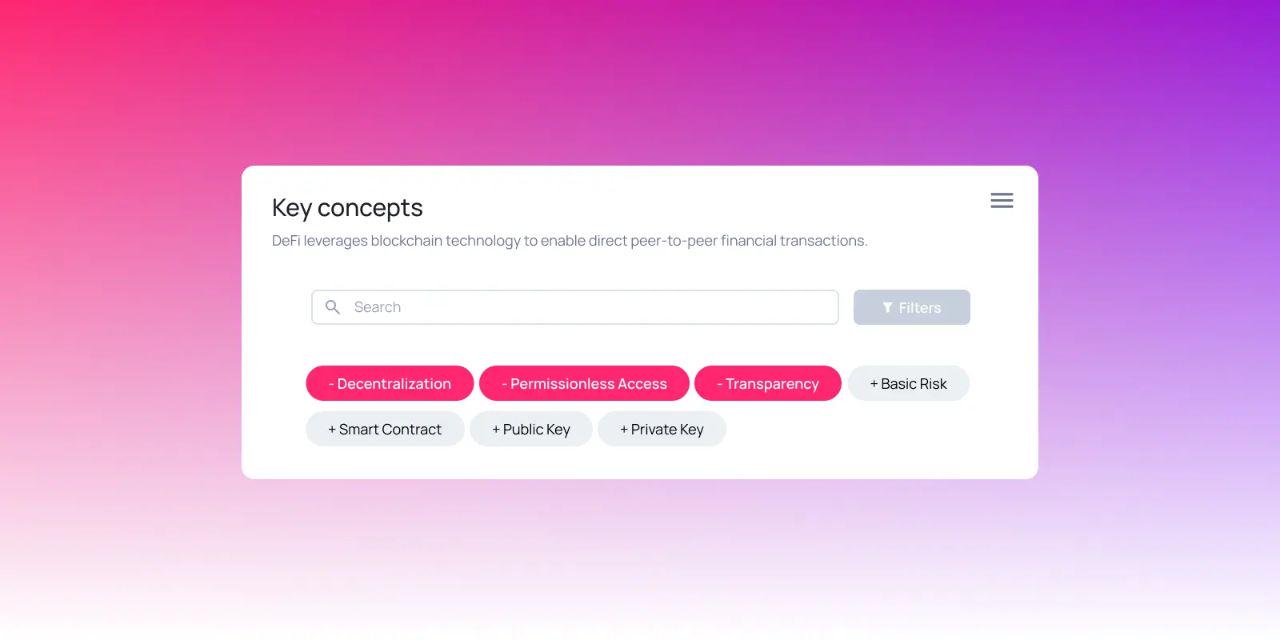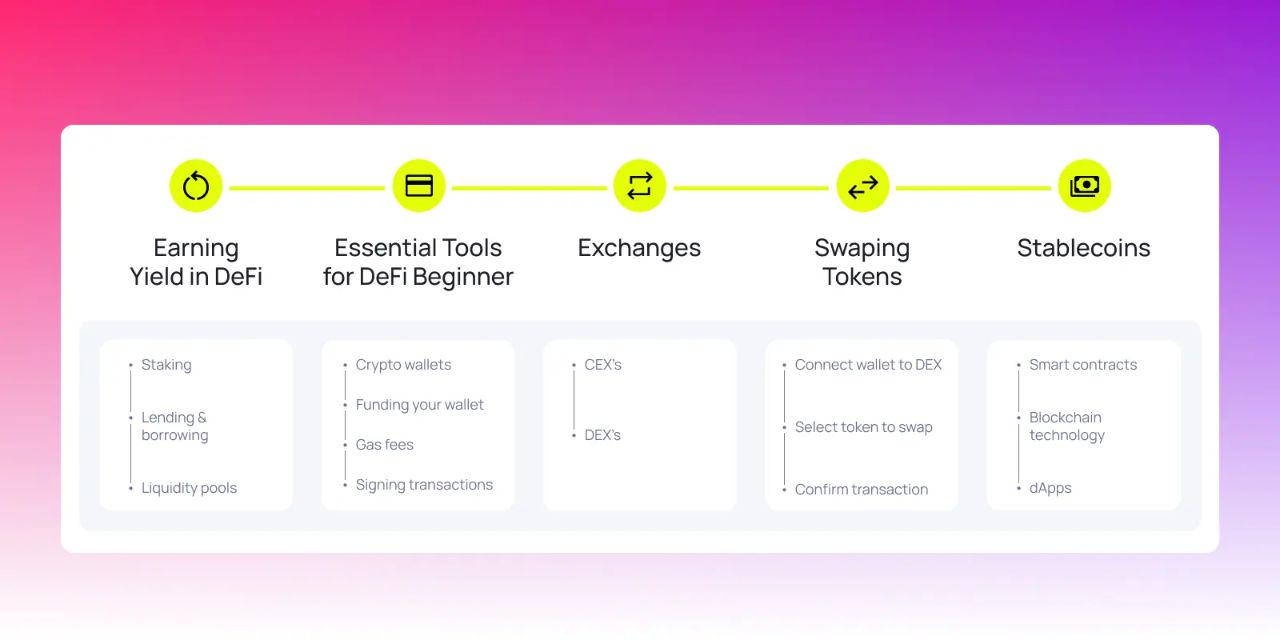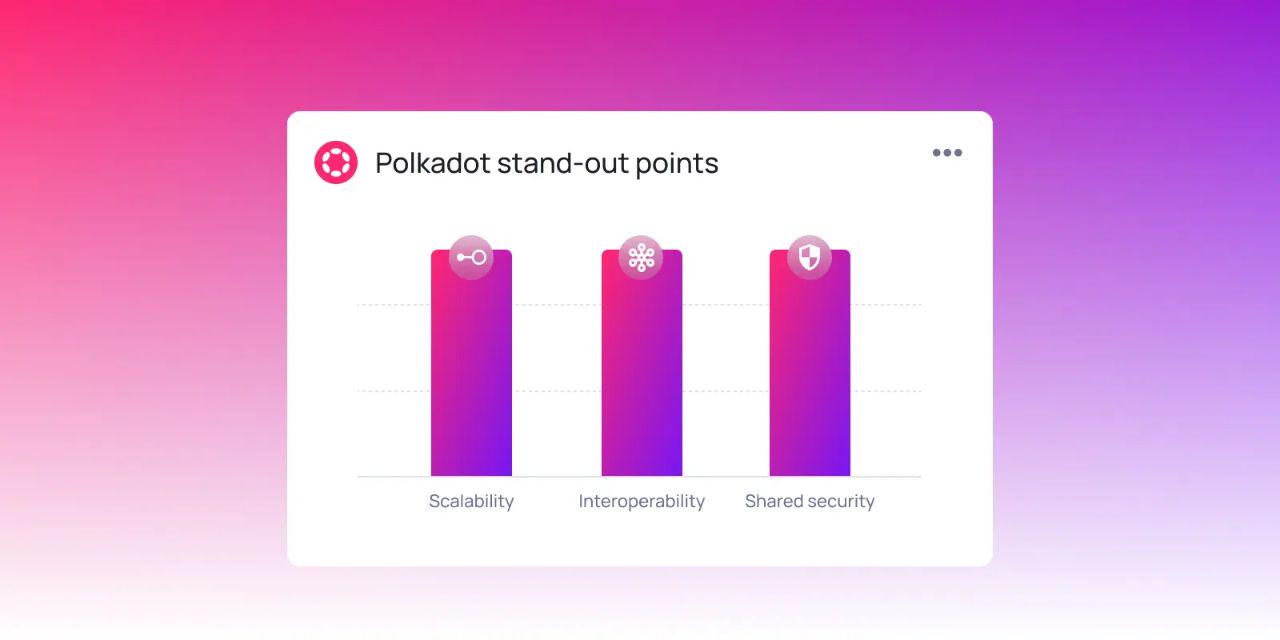
Decentralized finance, or DeFi, represents a revolutionary shift in the way the global financial system operates. It is an umbrella term that refers to a growing ecosystem of decentralized applications (dapps), protocols, and platforms built on public blockchain networks that provide financial services without the need for centralized intermediaries such as traditional banks, brokerage firms, or payment processors.
DeFi allows users to directly access peer-to-peer financial services, such as borrowing, lending, trading, and earning interest, rather than through centralized gatekeepers. These smart contracts, written as self-executing code on blockchain networks, eliminate the need for trusted third parties and reduce costs while increasing accessibility and transparency. Designed to be open source and permissionless, the DeFi ecosystem enables anyone with an internet connection to access financial instruments that were previously restricted by geography, bureaucracy, or capital. According to the World Bank, more than 1.4 billion people worldwide still do not have bank accounts. DeFi provides them with a path to entry.
However, not all DeFi is created equal. Liquidity should not be locked into a single chain or isolated in one ecosystem. True permissionless finance means users can freely transfer value across networks. This is where platforms like Polkadot come to the fore, enabling interoperability and multi-chain DeFi, removing barriers between otherwise fragmented protocols. Whether you’re curious about DeFi or ready to dive in, this guide will walk you through how we got here, how it works, and where it’s going.

How did we get here?
To understand DeFi’s potential, it helps to review the systems it aims to improve.
From TradFi to CeFi
Then to the evolution curve of DeFi
For most of modern history, traditional finance (TradFi) has dominated how people store, transfer, and add money. Banks, governments, and financial institutions act as trusted intermediaries, providing everything from loans to checking accounts. But they also control access, charge high fees, and are prone to inefficiencies, exclusion, and even failure.
The advent of Bitcoin shortly after the 2008 financial crisis introduced an entirely new concept to the public: a financial system that is not controlled by any central authority. This gave rise to a decentralized revolution that inspired a wave of technologies designed to rethink the way value and data are stored online. Somewhere between traditional finance and DeFi, centralized finance (CeFi) emerged, driven in large part by the need for a better user experience. Platforms such as Coinbase, Binance, and Kraken offer ways to convert currencies into cryptocurrencies, but CeFi still operates under centralized control. While it helped bring cryptocurrencies into the mainstream, CeFi also reintroduced many of the problems of TradFi, such as limited transparency, custody risks, and regulatory bottlenecks.
So what is the difference?
TradFi: Traditional financial institutions such as banks and credit unions
CeFi: Centralized crypto services that manage user funds, provide KYC/AML, and are similar in structure to banks
DeFi: A decentralized protocol built on the blockchain that allows users to interact peer-to-peer without an intermediary
Is DeFi the ultimate destination for financial freedom?
DeFi is still evolving — and fast. While this is a powerful shift toward user-owned, permissionless finance, it is not without its challenges. Usability, education, regulation, and scalability remain a work in progress.
But even in its early form, DeFi represents a meaningful alternative. It gives us a glimpse into what finance could look like when systems are open, programmable, and accessible to everyone.
What is DeFi and how does it work?
Decentralized finance is a new way to access and use financial services without banks, brokers, or other intermediaries. Instead of relying on traditional financial institutions to manage your funds, DeFi uses code. Specifically, it runs on public blockchain networks such as Polkadot and Ethereum, where smart contracts automatically and transparently execute financial transactions.
In DeFi, no bank holds your funds. Your assets are on-chain and recorded on an immutable ledger tied to your public wallet address. Instead of logging into a bank account, you connect your crypto wallet. Want to trade or swap tokens, connect to a decentralized exchange (DEX). Want to borrow or lend? Instead of going through a loan officer, you interact directly with a lending protocol, such as AAVE or Kylix Finance. Everything is peer-to-peer, with smart contracts handling logic and execution. This lowers the barrier to who can participate and gives users direct control over their financial assets.

DeFi as a financial technology
DeFi is part of the broader financial technology (aka fintech) movement, but is different from the apps you might use today to transfer money or manage your investments. While fintech builds a better user experience on top of traditional infrastructure, DeFi runs entirely on a technology stack built specifically for the open, decentralized web.
Let’s analyze this:
Traditional finance: reliance on banks, custodians and payment processors
Fintech: Building stylish apps that still rely on traditional Rails
Decentralized Finance: Using smart contracts and decentralized protocols to completely eliminate intermediaries
With DeFi, users do not need to trust institutions, they can verify the rules in the code, every transaction is auditable, and every operation is traceable. Fundamentally, this is a shift from trust to truth.
Key components that make DeFi possible
You might be wondering: do we really need blockchain technology to do this? Can’t we just use a regular database or distributed system?
It’s a legitimate question. But blockchains are more than just distributed data storage. They provide trustless coordination, a way for people who don’t know or trust each other to interact financially without relying on a central authority. This is something that traditional infrastructure can’t accomplish alone.
Building Blocks:
Blockchain networks: These form the foundation. DeFi runs on public networks like Ethereum and Polkadot, which provide decentralized infrastructure.
Smart Contract: A self-executing digital contract written in code that defines and enforces transaction rules. Once deployed, the contract cannot be changed by either party.
Decentralized applications (dapps): User-facing applications that connect to smart contracts. These decentralized software programs provide access to services such as exchange, trading, lending or borrowing.
Crypto Wallet: Not just a digital wallet, but a crypto wallet is the all-access pass to Web3. Wallets such as MetaMask, Nova Wallet, and Phantom enable users to hold, stake, send, and receive assets while serving as a login for DeFi.
Public and private key cryptography: Behind the scenes, cryptographic keys enable secure authentication and transaction signing, protecting access to your funds and verifying your transactions.
Together, these components unlock the defining properties of DeFi:
Transparency: Everything happens on-chain and in public.
Permissionless: Anyone can use or build on it without needing approval.
Accessibility: No gatekeepers or minimum requirements.
What can you actually do with DeFi?
As with all technology, its potential lies in what you can actually do with it. The DeFi ecosystem unlocks a wide range of financial activities that were once only possible through banks or traditional institutions. Now, anyone with a crypto wallet and an internet connection can access them, making the financial system more efficient, inclusive, and open.

Let’s explore defining DeFi
Some core services of the ecosystem
Centralized Exchanges (CEX): Platforms like Coinbase or Kraken can help you get started before bridging to DeFi-native platforms.
Decentralized Exchange (DEX): Trade tokens without a centralized exchange.
Lending: Provide crypto assets to earn interest or borrow money by depositing crypto as collateral. All of this is handled by smart contracts.
Automated Market Maker (AMM): Uses algorithms and liquidity pools instead of order books to determine prices. Anyone can contribute assets and benefit from liquidity provision.
Liquidity mining: Maximizing returns by staking or locking tokens in DeFi protocols. High risk, high reward.
Stablecoins: Use crypto assets pegged to fiat currencies for trading, savings, or as collateral — while minimizing volatility.
Peer-to-peer transactions: Send and receive cryptocurrencies directly - no banks, no intermediaries.
Many of these use cases benefit from cross-chain interoperability. For example, on Polkadot, liquidity and data can flow between rollups without the need for a dedicated bridge for each rollup, creating a more efficient and secure financial workflow. Together, these services highlight how DeFi is reshaping finance, giving people the tools to participate, trade, and grow their wealth on their own terms.
Why DeFi is important to users
DeFi changes the relationship between people and money. Instead of relying on financial institutions to grant access, users have control.
You use a self-custodial wallet to manage your assets
You choose how to interact with the protocol, not the company
You do not need permission to participate
This is especially powerful in regions where banking is inaccessible, unstable, or untrustworthy. DeFi enables users to send and receive remittances, obtain loans, and earn yield — often for the first time. With multi-chain infrastructure like Polkadot, composability is baked into financial products, enabling access across networks.
DeFi’s Benefits and Challenges
As with any emerging technology, DeFi has both advantages and trade-offs. While the benefits of greater autonomy are transformative, the risks require awareness and responsible participation. Here’s an overview of the trade-offs you can expect.
benefit:
Transparency and trustlessness: Everything is visible on-chain. Smart contracts enforce the rules.
Open and permissionless access: DeFi is accessible to anyone with a crypto wallet and an internet connection. Unlike traditional methods, it does not require a lengthy registration process or identity verification (often called Know Your Customer or KYC). This lowers barriers for people around the world who may not have access to the formal banking system.
Interoperability and composability: Protocols can plug into and build upon each other, creating a stronger and more diverse ecosystem.
Global participation: From Lagos to London, decentralization enables anyone with a crypto wallet to participate instantly and affordably.
Potential challenges:
Regulatory uncertainty: DeFi operates in a grey area, with rules varying across jurisdictions.
Security Risks: Phishing scams, fake dapps, and lost wallet seed (recovery) phrases can lead to permanent loss of funds. Before connecting a wallet, users should be vigilant, verify the link, and understand what they are signing.
Market volatility: Cryptocurrencies evolve rapidly. Large price swings could impact loan positions, stablecoins, or collateralized loans.
Usability and education gaps: DeFi introduces new tools, unfamiliar terminology, and an overwhelming learning curve. For newcomers accustomed to traditional applications and banking, the account opening experience can be confusing without clear guidance and user-friendly design.
How to get started with DeFi
Getting started with DeFi doesn’t have to be overwhelming. While we’ll cover step-by-step walkthroughs in more depth in future guides, here’s a high-level overview of how people typically begin exploring DeFi:
Your on-chain identity – Crypto wallet
Wallets such as Nova Wallet, Zerion, or Phantom can serve as your login to DeFi. Wallets are usually designed for a specific blockchain environment, such as EVM-compatible wallets (built for Ethereum-based dapps), PVM-compatible wallets (built for Polkadot-based dapps), or Solana wallets (built for Solana-based dapps). Unlike CeFi, where you create an account, crypto wallets are self-custodial and cryptographically secured.
Access Points – CeFi and Bridges
Even if you are entering DeFi, CeFi platforms like Coinbase or Kraken help convert fiat currencies (USD, EUR) into cryptocurrencies. From there, users typically send funds to self-custodial wallets to interact with DeFi dapps. Platforms like Hyperbridge are building a fully OnChain Multichain Bridge to allow assets and data to move securely across the network. This enables users to interact with DeFi across multiple chains without relying on a centralized bridge.
Platforms and Protocols – Where DeFi is happening
Once your funds are on-chain and in your wallet, you can explore DeFi applications. These include decentralized exchanges (DEX) for trading, lending protocols for earning or borrowing, staking platforms for rewards, and other dapps built around finance. Each platform runs on smart contracts, giving you full control and transparency over how you interact with your assets.
Trends and innovations shaping the future of finance
DeFi continues to evolve. Here are some of the most meaningful trends influencing its direction:
Real World Assets (RWA) and traditional integration: Tokenizing physical and financial assets such as real estate, government treasuries and bonds brings traditional assets on-chain, expanding DeFi’s use cases.
Liquidity Staking and Restaking: Users can stake tokens and still gain liquidity, and even re-stake them across chains and dapps. Polkadot projects like Bifrost are creating cross-chain liquidity staking experiences that allow users to seamlessly access DeFi opportunities.
Multi-chain and cross-chain liquidity: Polkadot and other ecosystems are addressing the fragmentation problem by enabling seamless asset movement between chains.
DeFi 2.0 and Sustainable Economics: Moving towards more sustainable protocols with better token economics and incentive alignment, similar to the Polkadot 2.0 initiative, which focuses on aligning network incentives and lowering barriers for builders.
Regulatory innovation: From stablecoin frameworks to decentralized identities (DIDs), regulation is gaining structure and clarity.

These trends all point to one thing: DeFi is not slowing down. It continues to expand in scope, complexity, and global relevance. DeFi has changed the way people think about access to money, ownership, and opportunity, and is becoming a more open and inclusive financial system than ever before.
As networks like Polkadot continue to enhance the core to enable a more interoperable DeFi ecosystem, the potential for participation and builders continues to grow. Whether you are just beginning your DeFi journey, ready to build the next wave of DeFi protocols, or are simply curious about potential blockchain use cases, now is a good time to start looking at the possibilities.
Original link: https://polkadot.com/blog/defi-explained-starter-guide/













